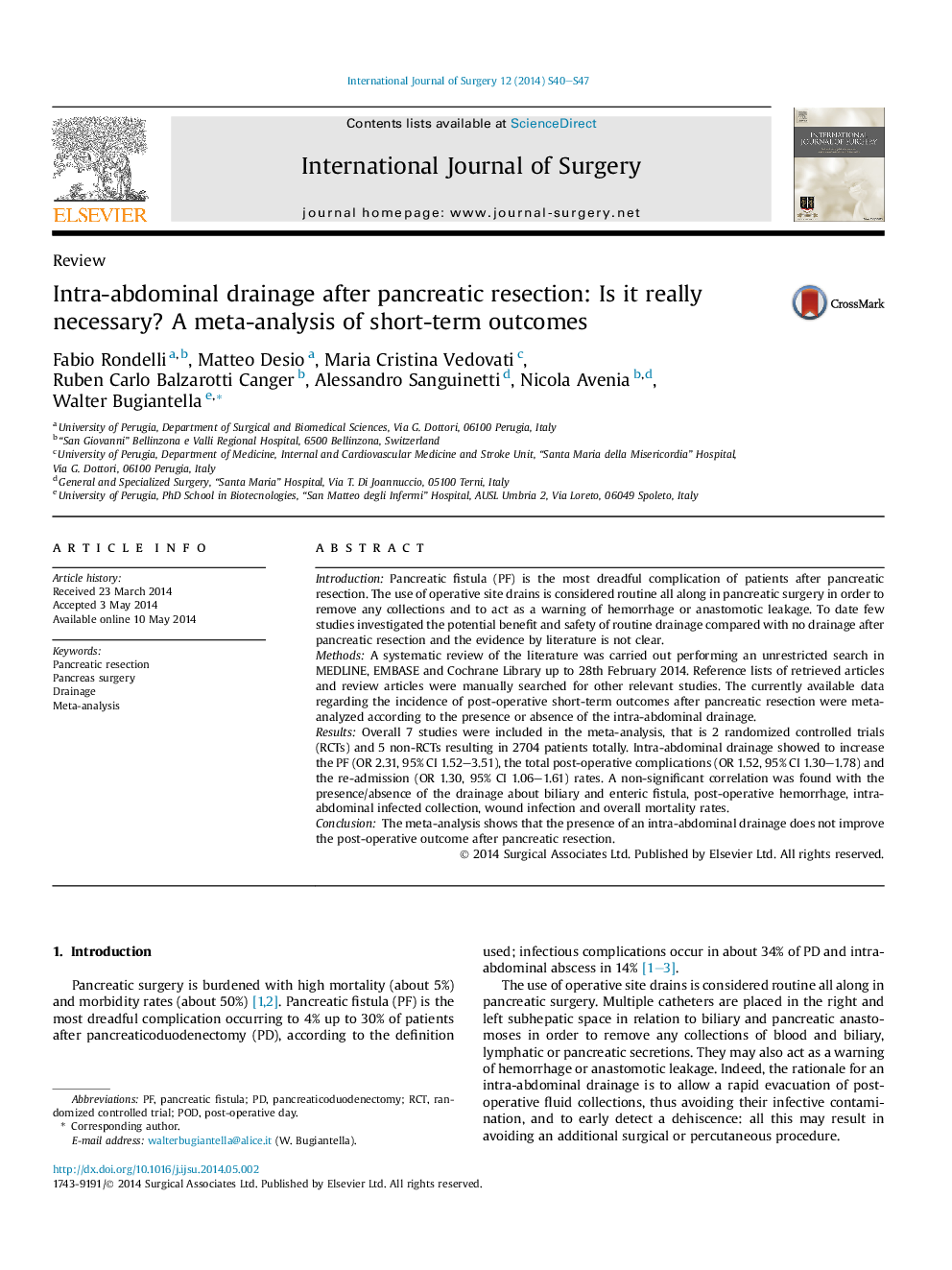| Article ID | Journal | Published Year | Pages | File Type |
|---|---|---|---|---|
| 4286637 | International Journal of Surgery | 2014 | 8 Pages |
IntroductionPancreatic fistula (PF) is the most dreadful complication of patients after pancreatic resection. The use of operative site drains is considered routine all along in pancreatic surgery in order to remove any collections and to act as a warning of hemorrhage or anastomotic leakage. To date few studies investigated the potential benefit and safety of routine drainage compared with no drainage after pancreatic resection and the evidence by literature is not clear.MethodsA systematic review of the literature was carried out performing an unrestricted search in MEDLINE, EMBASE and Cochrane Library up to 28th February 2014. Reference lists of retrieved articles and review articles were manually searched for other relevant studies. The currently available data regarding the incidence of post-operative short-term outcomes after pancreatic resection were meta-analyzed according to the presence or absence of the intra-abdominal drainage.ResultsOverall 7 studies were included in the meta-analysis, that is 2 randomized controlled trials (RCTs) and 5 non-RCTs resulting in 2704 patients totally. Intra-abdominal drainage showed to increase the PF (OR 2.31, 95% CI 1.52–3.51), the total post-operative complications (OR 1.52, 95% CI 1.30–1.78) and the re-admission (OR 1.30, 95% CI 1.06–1.61) rates. A non-significant correlation was found with the presence/absence of the drainage about biliary and enteric fistula, post-operative hemorrhage, intra-abdominal infected collection, wound infection and overall mortality rates.ConclusionThe meta-analysis shows that the presence of an intra-abdominal drainage does not improve the post-operative outcome after pancreatic resection.
